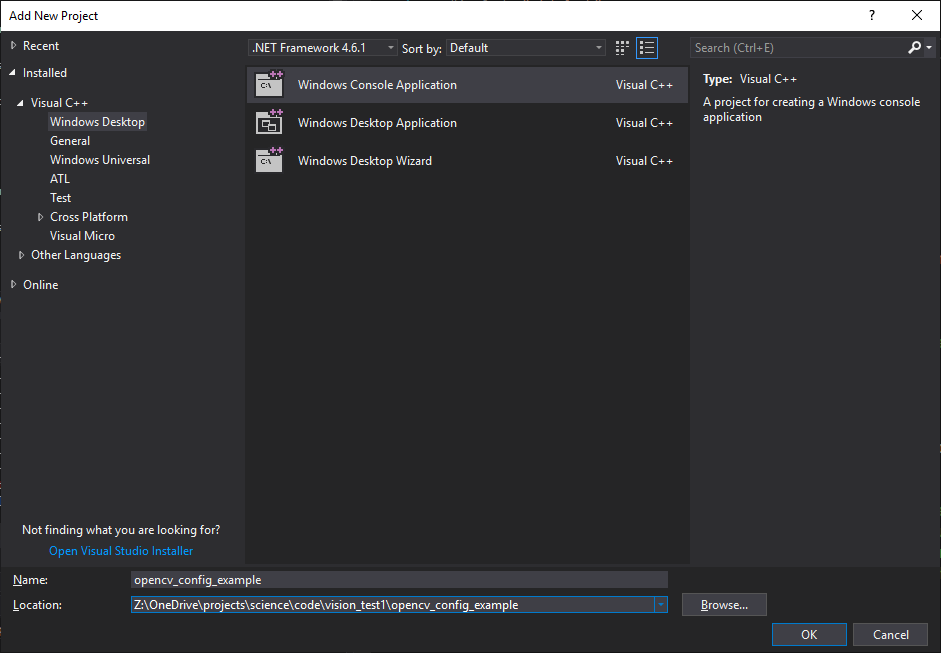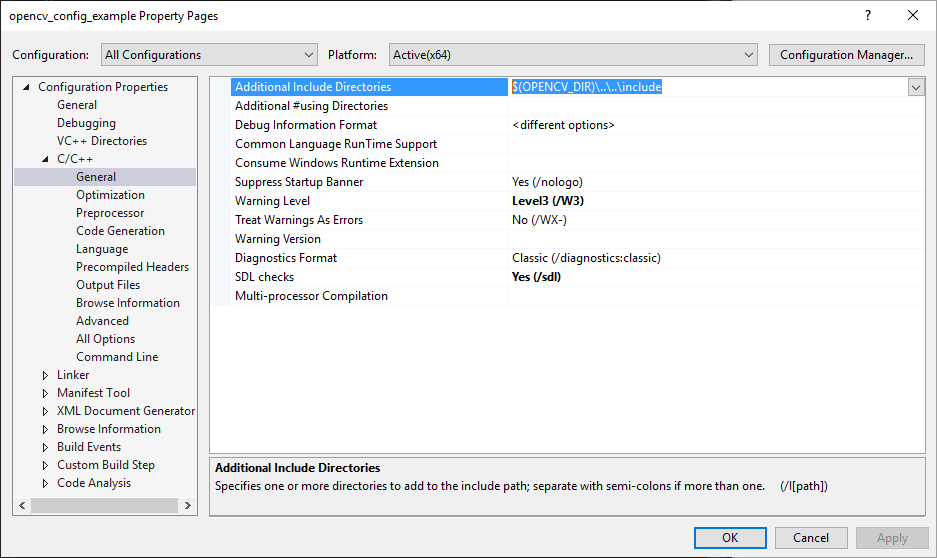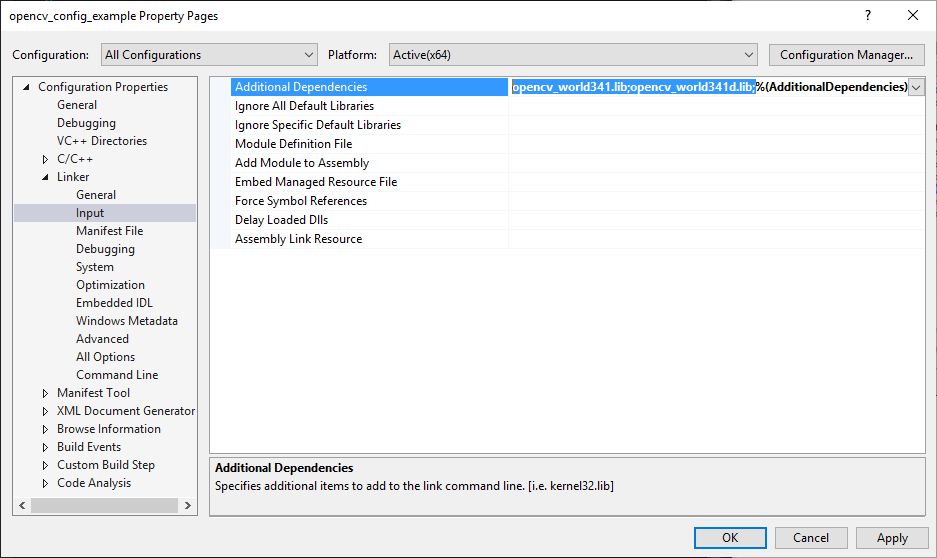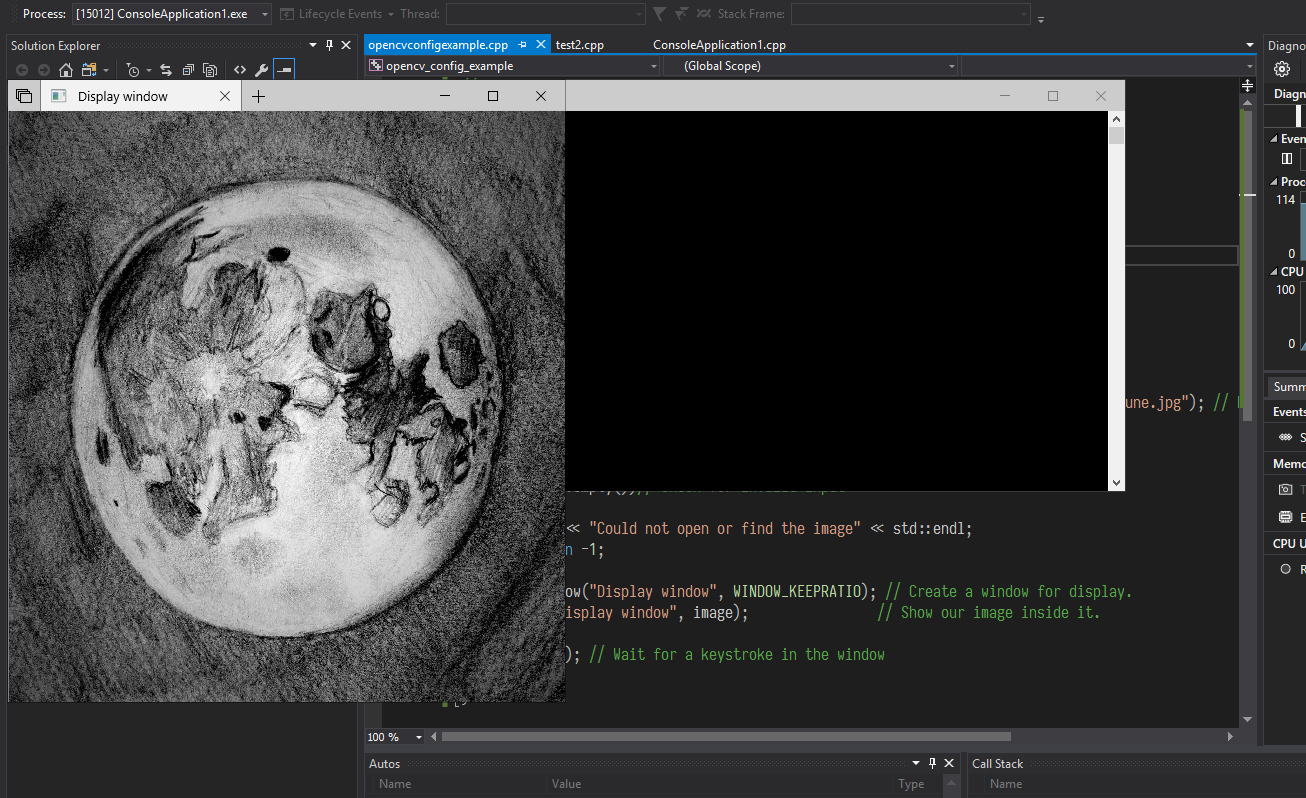1. Get software:
2. Install Visual Studio; Unpack OpenCV somethere and add enviromental variable
OPENCV\_DIR = C:\\opencv-3.4.1-vc14\_vc15\\opencv\\build\\x64\\vc15

3. Create Windows Console Application in Visual Studio

4. Add OpenCV to a project property
- Add
$(OPENCV_DIR)\..\..\include to C/C++ - General - Additional Include Directories

- Add
$(OPENCV_DIR)\lib to Linker - General - Additional Library Directories

- Add
opencv_world341.lib and opencv_world341d.lib to Linker - Input - Additional Dependencies

5. Add code (add path to you image at 13-th line):
1
2
3
4
5
6
7
8
9
10
11
12
13
14
15
16
17
18
19
20
21
22
23
24
25
26
27
| #include "stdafx.h"
#include <opencv2/core.hpp>
#include <opencv2/imgcodecs.hpp>
#include <opencv2/highgui.hpp>
#include <iostream>
using namespace cv;
using namespace std;
int main(int argc, char\*\* argv)
{
string imageName("Z:/OneDrive/projects/science/code/vision\_test1/vision\_test1/lune.jpg"); // by default
if (argc > 1) // run with argument
imageName = argv\[1\];
Mat image = imread(imageName.c\_str(), IMREAD\_COLOR); // Read the file
if (image.empty())// Check for invalid input
{
cout << "Could not open or find the image" << std::endl;
return -1;
}
namedWindow("Display window", WINDOW\_KEEPRATIO); // Create a window for display.
imshow("Display window", image); // Show our image inside it.
waitKey(0); // Wait for a keystroke in the window
return 0;
}
|
6. Build and RUN!






